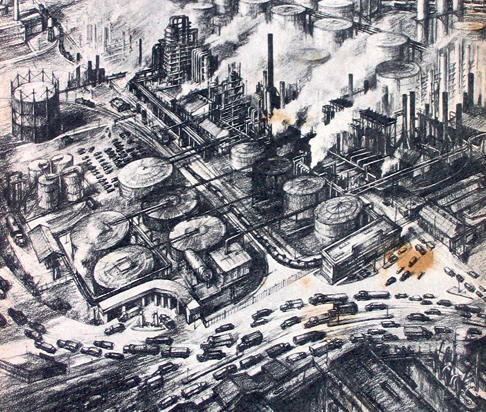Much more than her precursor Joseph Pennell, young Viennese artist Lili Rethi was able to transform static architectural sites into energetic, vibrant organisms. The illustrations of the German version of Upton Sinclair´s Letters to Judd, an American Workingman (Briefe an einen Arbeiter, Leipzig- Wien 1932) already revealed her specific talent to praise the processes and the monumental results of collective human labour. Dark hypertrophic visions like Fritz Langs Metropolis were in the air.
Just like her colleague Theo Matejko, the well known illustrator who depicted speed and dynamics, and like Thea von Harbou, the author of Fritz Lang’s utopian empire of strengh, Rethi was an artist initially much welcomed by the Nazis. However, because she had a Jewish background her situation worsened over time. In 1939 she accepted a graphic commission that gave her the opportunity to escape. It took her to Denmark and from there she travelled to New York, then considered a model of Metropolis. In North America she managed to continue her career and illustrated over fifty books, among them many for young adults with historical and scientific depictions. The ones she was best known for had titles like Builders for Battle, How Pacific Naval Air Bases were constructed (1948), Petroleum. The Story of an American Industry (1948), The Bridge (1964), and Manic 5. The building of the Daniel Johnson Dam (1971). In the latter book, Rethi was announced as “an artist who used her talents mainly to portray engineering and archictectural achivements.”
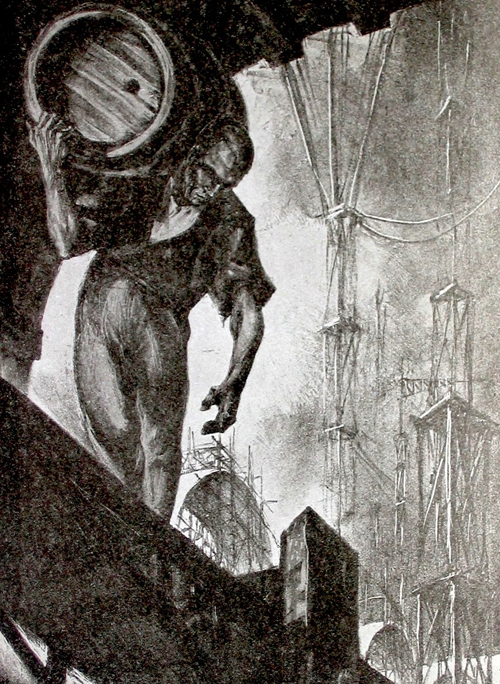
Lili Réthi: Upton Sinclair, Briefe an Einen Arbeiter. Leipzig / Wien 1932 (MePri-Coll.)
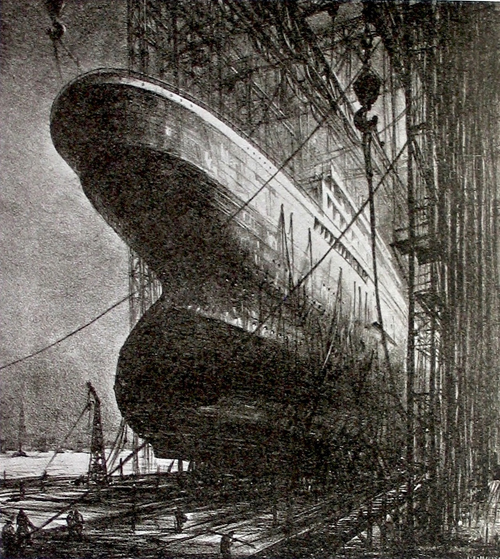
Lili Réthi: Upton Sinclair, Briefe an Einen Arbeiter. Leipzig / Wien 1932 (MePri-Coll.)
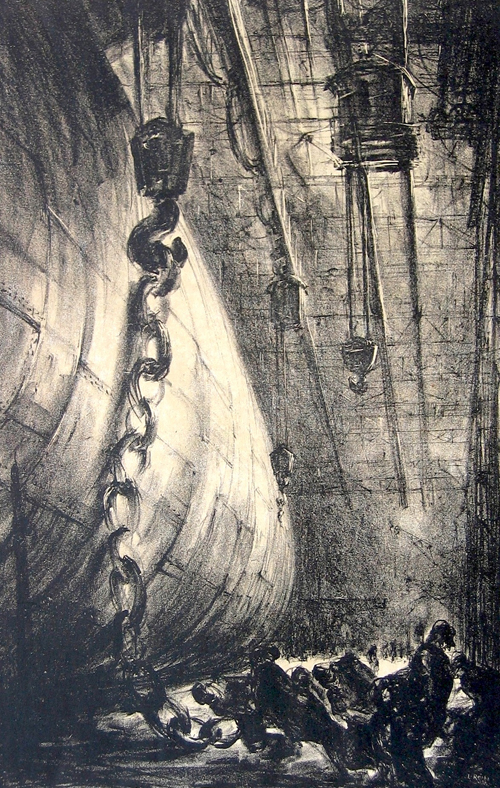
Lili Rethi: Kesselschmiede. Lithography. Vienna 1921 (MePri-Coll.)
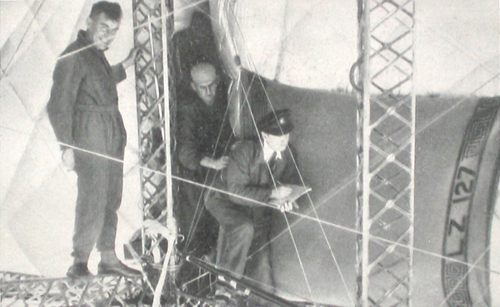
Theo Matejko sketching. in: Walther Kleffel: Die Zeppelin-Fahrt. Im Luftschiff nach Amerika und zurück. Berlin 1928 (MePri-Coll.)
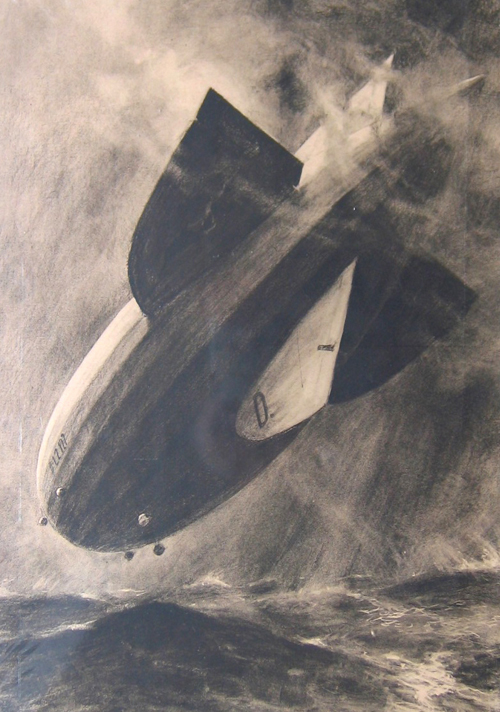
Theo Matejko: Zeppelin. Lithography. Berlin 1928 (MePri-Coll.)
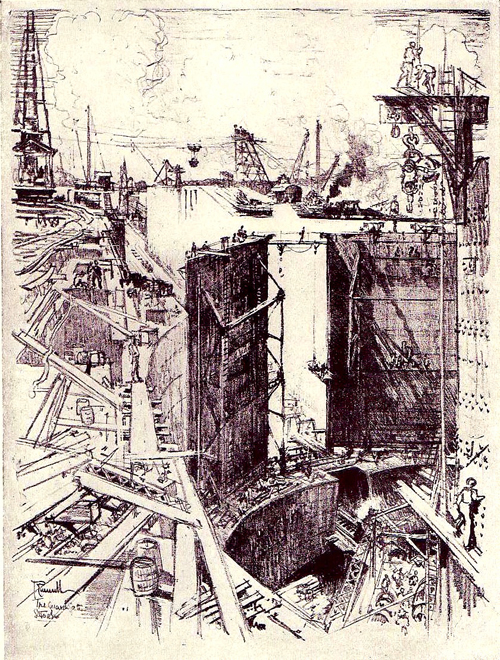
Joseph Pennell: Pictures of the Panama Canal. Philadelphia / London 1913 (MePri-Coll.)
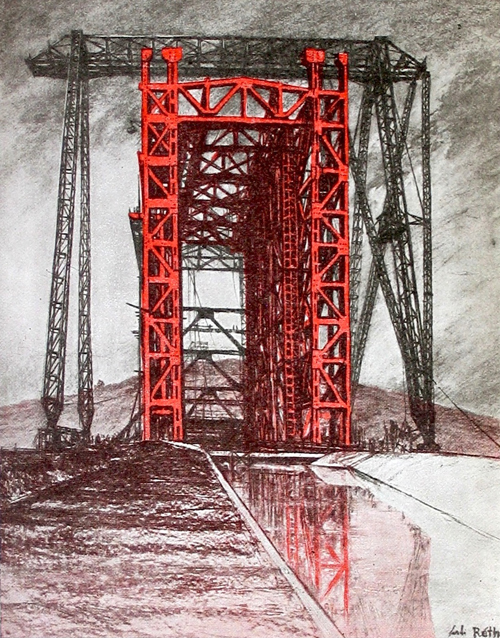
Lili Réthi: Upton Sinclair, Briefe an Einen Arbeiter. Leipzig / Wien 1932 (MePri-Coll.)
In the late Forties and Fifties, when hardly anyone thought about the ecological consequences, she would glorify the extraction of global resources as marvels of a never- ending human progress. Canadian artist Susan Turcot , who ideologically takes an opposing viewpoint to mass resource extraction, still found inspiration in Rethi’s work, and in her determination to capture the magnitude of locations, non-accessible to the public, as well as her attention to detail in her observational drawings.* There is an aspect of liveliness and adventurousness in her drawings, that is quite exceptional in the topographic genre, a kind of tactile and sculptural quality.
Alexander Roob
* Rethi’s work was brought to Turcot’s attention by the illustrator Jean Mark.
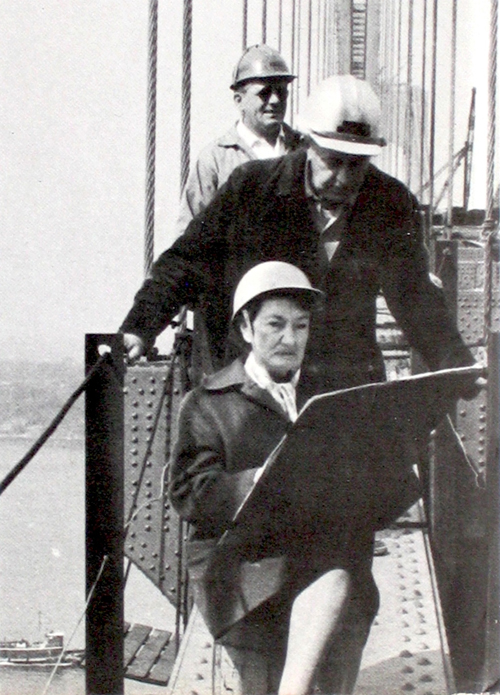
Lili Rethi: Gay Talese, The Bridge. New York 1964 (MePri-Coll.)
Susan Turcot: I´m very happy to see the photo of her on site! She was there freezing with stockinged legs and a hard hat! You can see by the intensity on her face that she would settle for nothing less than absolute accuracy.
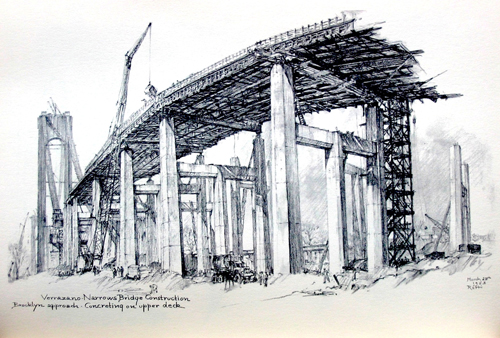
Lili Rethi: Gay Talese, The Bridge. New York 1964 (MePri-Coll.)
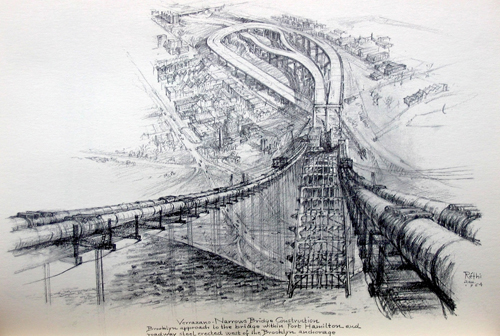
Lili Rethi: Gay Talese, The Bridge. New York 1964 (MePri-Coll.)
Susan Turcot: She left out areas in the drawings, while leading one’s eyes into a directed dynamic. There are fading and intensifying scribbles, contrasting with the detail and density in other parts of her works giving the drawings a human warmth. You can feel her passion for these locations, the magnitude, the human endeavor, the complexity of the engineering etc.
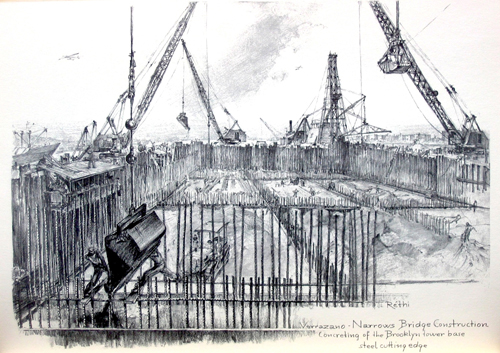
Lili Rethi: Gay Talese, The Bridge. New York 1964 (MePri-Coll.)

Lili Rethi: Manic 5. The building of the Daniel Johnson Dam. New York 1971 (MePri-Coll.)

Lili Rethi: Manic 5. The building of the Daniel Johnson Dam. New York 1971 (MePri-Coll.)

Lili Rethi: Manic 5. The building of the Daniel Johnson Dam. New York 1971 (MePri-Coll.)

Lili Rethi: Manic 5. The building of the Daniel Johnson Dam. New York 1971 (MePri-Coll.)
Susan Turcot: The lightness and grain of the pencil, as well as the energy in her strokes, are in contrast to these monumental industrial complexes, so forbidding in their potential for damage. AND YET, there she sits, on location, translating what seem impossible to depict, as a powerful message back to us.

Lili Rethi: Manic 5. The building of the Daniel Johnson Dam. New York 1971 (MePri-Coll.)
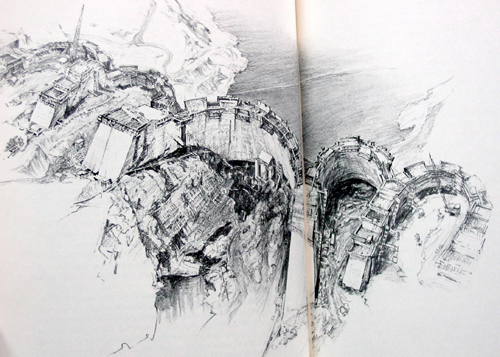
Lili Rethi: Manic 5. The building of the Daniel Johnson Dam. New York 1971 (MePri-Coll.)

Lili Rethi: Manic 5. The building of the Daniel Johnson Dam. New York 1971 (MePri-Coll.)
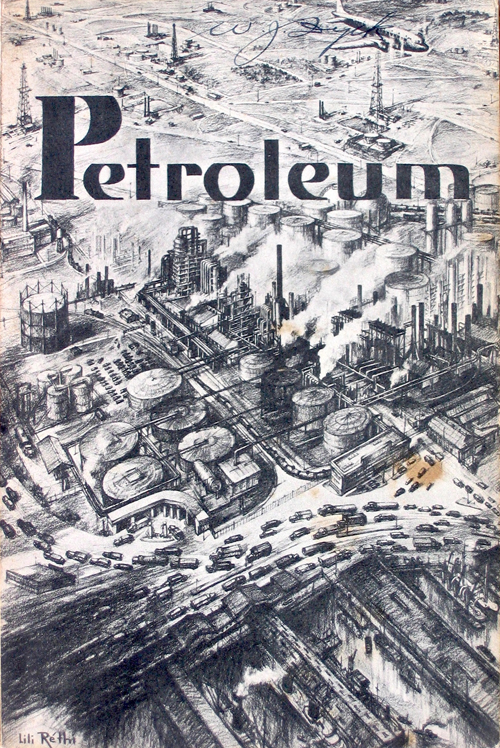
Lili Rethi: Petroleum. The Story of an American Industry. Baltimore 1948 (MePri-Coll.)

Lili Rethi: Petroleum. The Story of an American Industry. Baltimore 1948 (MePri-Coll.)
Susan Turcot: Rethi’s image of a petroleum city and her illustration of The worlds oil man is an American show… I think, a utopic new world darkened at the edges by the drastic changes in europe which caused her departure.

Portrait Lili Rethi (ca. 1970)
